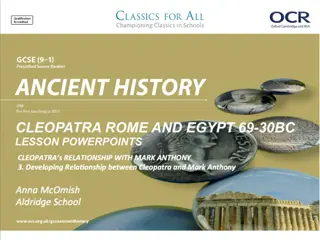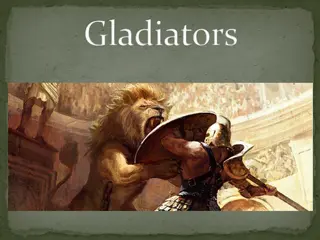Life of Gladiators in Ancient Rome
Gladiators in ancient Rome were a diverse group, including slaves, criminals, and prisoners of war, forced into their roles. While some found appeal and wealth in the arena, others faced harsh conditions. Trained by retired gladiators specialized in different fighting styles, they underwent rigorous training and strict discipline. The life of a gladiator involved careful assessment, specialized training, and the harsh realities of combat in the arena.
Download Presentation

Please find below an Image/Link to download the presentation.
The content on the website is provided AS IS for your information and personal use only. It may not be sold, licensed, or shared on other websites without obtaining consent from the author.If you encounter any issues during the download, it is possible that the publisher has removed the file from their server.
You are allowed to download the files provided on this website for personal or commercial use, subject to the condition that they are used lawfully. All files are the property of their respective owners.
The content on the website is provided AS IS for your information and personal use only. It may not be sold, licensed, or shared on other websites without obtaining consent from the author.
E N D
Presentation Transcript
During the period of the Roman Republic, newly recruited gladiators were typically slaves, criminals, and prisoners of war. They had no choice and were forced into the roles of gladiators. They were sent to special gladiator schools for training.
The life of a gladiator held some appeal to free men. The living conditions of gladiators were good and the role of a gladiator could be highly lucrative. Gladiators were paid each time they fought and they were allowed to keep any rewards and purses of money. The most successful gladiators were also treated like modern day 'Pop Idols' with fan worship, fame, and glory. Other free men simply needed money to pay off their debts. Their living conditions were much better than the other gladiators and they were given much more freedom and were allowed to leave the gladiator schools, or barracks.
When a new recruit entered one of the gladiator schools, he was assessed by the lanista (owner of the school), a doctor, and the trainers. He would first be checked by a medici (a doctor, not to be confused with the doctores) to ensure he was fit. Their physique would be assessed and a decision made as to what type of gladiator he would be trained as in the gladiator school.
The gladiator trainers who worked in the school were often retired gladiators who specialized in specific styles of fighting and weapons. The trainer was called Doctores . A doctor who trained the type of gladiator called a Retiarius would be referred to as Doctores Retiarii whereas one who trained Secutores, was called Doctores Secutorum.
The life as a gladiator started at dawn when their cells were unlocked and they were sent for the first meal of the day. Strict discipline was enforced and new gladiators were not allowed to speak at mealtimes and were bound in shackles unless they were training. New gladiators were watched and guarded at all times. The new gladiators were seen as valuable commodities and were therefore well fed.
The life as a gladiator and his training at first concentrated on getting the new gladiator to the peak of fitness. Their initial training did not involve the use of dangerous real weapons,. Wooden training swords called the rudus were used. Gladiator training focused on the different fighting styles and weapons required by specific types of gladiators.
Gladiators trained like modern athletes do today. They received three square meals a day to keep them healthy and strong and they got medical attention if they needed it. They trained for hours each day and learned how to use various weapons including the war chain, net, trident, dagger and lasso.
Each gladiator could choose how they wished to fight - they could choose their armor and their weapon of choice. They would dress up for the crowds and wear helmets, specially shaped shields, and some would only wear a loin cloth.
Myrmillo - swordfish had a helmet with a fish crest, oblong shield and sword and usually fought a retiarius. Retiarius - fisher with a net was armed with a net and trident or dagger. Samnis - man from Samnium, Samnite had a short sword (gladius), visored helmet and oblong shield. Thrax - man from Thrakia, Thracian was armed with a curved dagger (scimitar) and round shield
Gladiators who fought in heavy armor were slower and required different techniques and skills than those of the gladiators who were lightly armed, who were fast and light. The different types of gladiators required customized training according to their armor, weapons and fighting techniques.
Gladiators were paid each time they fought and if they survived their three to five years they were freed. The most famous arena was the Colosseum.
The day before the gladiatorial games a public banquet was held for the gladiators. During this feast the gladiators were all determined to enjoy themselves as they were all aware it could be their last meal and their last day in the life of the gladiator.
Gladiatorial fights were often two gladiators pitted against each other in one on one combat. Special sponsors of the games or VIP guests could request other combinations like several gladiators all fighting each other at once.
Contrary to what is seen in most movies, it was less likely that gladiatorial combat would result in death. Gladiators were expensive to maintain, train and replace. Keeping the gladiators alive, producing money, and keeping the most popular crowd pleasers was far more practical. But there were definitely deaths. When an opponent was overpowered, the victor would turn to the crowd for a reaction. The defeated gladiator would sometimes hold up a finger on his left hand asking to be spared. But the crowd would yell whether or not they wanted his life to be spared or whether the victor should finish him off. The official decision was usually left to the Emperor if he was present.
If the decision was death, there was a ritual to be performed which would bring honor in death to the loser. With one knee on the ground the loser would grasp the leg of the victor, who, while holding the helmet or head of his opponent would plunge his sword killing the man instantly.
The winners of the battles would receive a palm branch and a sum of money and for especially outstanding performances, a laurel crown was awarded. The victor would run around the perimeter of the arena waving the palm. The ultimate prize was permanent discharge from the obligation to fight in the arena, most certainly in recognition of an outstanding career. As a symbol of this award, the gladiator would be given a wooden sword, perhaps to suggest that he no longer had to fight with real weapons or at the risk of his life.
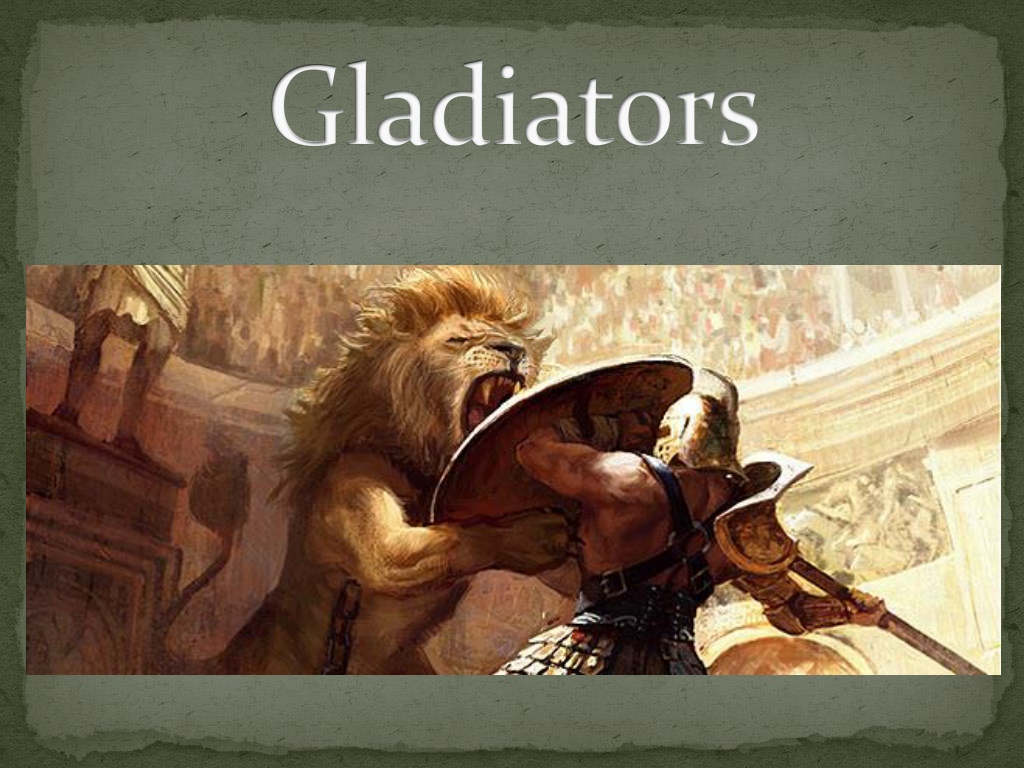





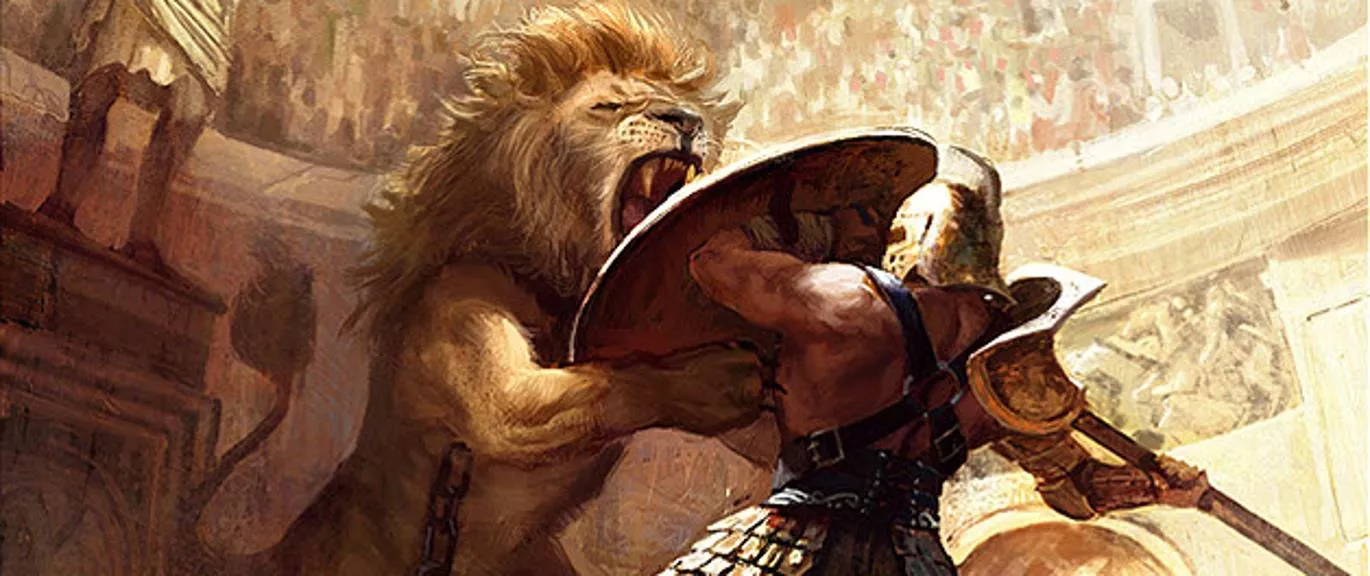

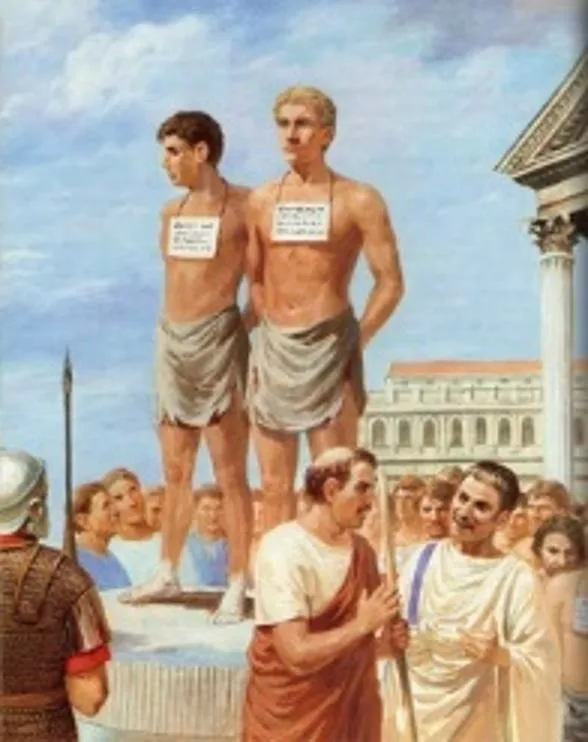


![READ [PDF] Trickster Caught: An Alien Gladiator Romance (Gladiators of the Vaga](/thumb/42236/read-pdf-trickster-caught-an-alien-gladiator-romance-gladiators-of-the-vaga.jpg)



